New to houseplants? Start with a Philodendron. It’s easy to care for and grows well with little effort. It can handle forgetfulness and low light.
There are many Philodendron species to choose from. Find the perfect one for your space.
Learning to care for Philodendron is key to their happiness. They need the right light, water, and food. Start with the basics to keep your plant thriving.
Philodendron plants are great for indoor spaces. They do well in low light and are easy to care for. With simple tips, you can keep your plant happy and healthy.
Understanding Philodendron Varieties
There are over 480 types of Philodendron plants. Choosing the right one can be hard. Think about the light, temperature, and care you can give. Costa Farms talks about popular ones like ‘Birkin’, ‘Brandi’, and ‘Brasil’ Philodendron.
When picking a Philodendron, follow care tips and guides. They say to give bright, indirect light and water right. Some are small for tight spots, while others grow big and need more work.
Popular Types of Philodendron
The ‘Birkin’ Philodendron has white stripes on green leaves. The ‘Brasil’ has golden-yellow leaves. Knowing what each needs helps you care for them better.
How to Choose the Right Type for Your Space
To pick the right Philodendron, think about a few things:
- Lighting: Most like bright, indirect sunlight.
- Temperature: They like 65-75°F (18-24°C).
- Maintenance: Some are easier to care for than others.
By considering these, you can find the perfect Philodendron for your space. Enjoy the beauty and benefits of these plants.
Ideal Growing Conditions for Philodendrons
For Philodendron care indoors, the right growing conditions are key. These plants love bright, indirect light but can handle low light too. Direct sunlight can burn their leaves, so finding a balance is important.
For outdoor care, choose a spot with filtered sunlight or dappled shade. This helps them grow well.
Philodendrons prefer warm temperatures, between 65°F to 75°F (18°C to 24°C). They also like high humidity, around 50-60%. To keep humidity right, you can use a tray with water and pebbles or a humidifier. Here are some tips for ideal growing conditions:
- Light: Bright, indirect light, avoiding direct sunlight exposure
- Temperature: 65°F to 75°F (18°C to 24°C)
- Humidity: 50-60%
By following these tips, you can create a perfect home for your Philodendron. This is true whether you’re caring for it indoors or outdoors.
| Factor | Ideal Condition |
|---|---|
| Light | Bright, indirect light |
| Temperature | 65°F to 75°F (18°C to 24°C) |
| Humidity | 50-60% |
Watering Your Philodendron
Watering your Philodendron right is key. You need to keep it moist but not too wet. Too much water can hurt the roots.
Check the soil by sticking your finger in it. If it’s dry up to your knuckle, it’s time to water.
Costa Farms says water when the top inch of soil is dry. This helps your Philodendron stay healthy. Watch out for signs of too much or too little water.
Signs of Overwatering vs. Underwatering
Look out for these signs:
- Yellowing leaves: a sign of overwatering
- Browning leaves: a sign of underwatering
- Soft, mushy stem: a sign of overwatering
- Crispy, brown leaves: a sign of underwatering
Best Watering Practices
Water well in spring and summer. Let water drain out of the holes. In winter, water less because the plant sleeps.
Also, mist the leaves often to keep humidity up. Always check the soil to avoid too much or too little water.
Soil and Potting Recommendations
Soil and potting are key for Philodendron care. A mix that drains well is important to avoid root rot. The right pot size is also crucial.
A good soil mix should have aeration, drainage, and hold moisture. Mix 1 part orchid bark, ¼ part perlite, 1 part peat moss, and 1 part potting mix. This mix helps prevent root rot and other problems.
When potting your Philodendron, remember a few things. Use a pot just a bit bigger than the roots. Make sure it has holes for drainage. Avoid plastic pots for better air and water flow.
Follow these tips for a healthy Philodendron. Change the soil every two years. If you have questions, don’t hesitate to ask.
Fertilizing Philodendrons
When you care for your Philodendron, don’t forget to fertilize. Costa Farms says to use a balanced, water-soluble fertilizer in spring and summer. This helps your Philodendron grow strong and healthy leaves.
A good fertilizer has an NPK ratio of 20-20-20. But, you should only use half the amount. This keeps the roots safe. Remember, Philodendrons don’t need a lot of fertilizer to do well.
Watch out for signs like slow growth, leaf drop, and yellow leaves. These can mean your plant isn’t getting enough food. Try using compost instead. It’s a great way to feed your Philodendron and keep it happy.
- Fertilize during the growing season (spring and summer) for optimal results.
- Use a balanced, water-soluble fertilizer with an NPK ratio of 20-20-20.
- Dilute the fertilizer to half the recommended strength to avoid burning the roots.
- Fertilize sparingly, as Philodendrons don’t require a lot of fertilizer to thrive.
| Fertilization Frequency | Season |
|---|---|
| 1-2 times per month | Spring and Summer |
| Every 6-8 weeks | Winter |
Repotting Your Philodendron
As you care for your Philodendron, you’ll need to repot it soon. The Spruce says to do this every 1-2 years. Pick a pot that’s just a bit bigger than the old one. Philodendrons like to be a little snug in their pots.
It’s important to use a potting mix that drains well. This keeps the soil moist but not soggy. When you repot, carefully take the plant out of its old pot. Then, put it in the new pot with fresh mix around the roots. Water it well to help it settle in.
By following Philodendron care instructions and a Philodendron care guide, your plant will thrive. Here are some important tips:
- Repot your Philodendron every 1-2 years to provide a larger container for the expanding root system.
- Choose a pot that is only slightly larger than the previous one to prevent the soil from becoming too wet.
- Use a well-draining potting mix to prevent waterlogging and root rot.
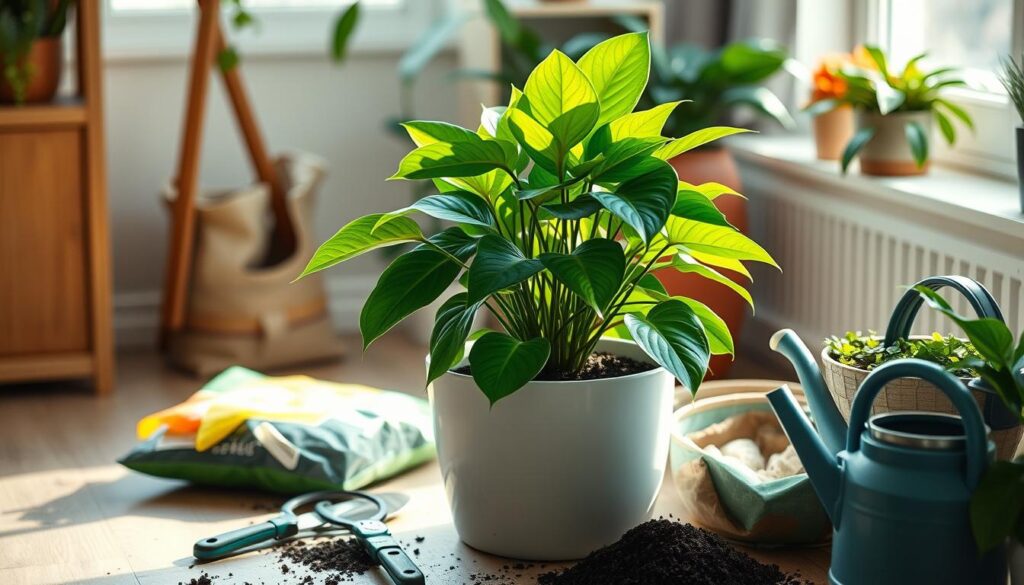
By following these tips, your Philodendron will grow strong and beautiful. Keep an eye on your plant and adjust its care as needed. If you have questions, don’t hesitate to look up a Philodendron care guide.
| Repotting Frequency | Pot Size | Potting Mix |
|---|---|---|
| Every 1-2 years | Slightly larger than the previous one | Well-draining |
Pruning and Maintenance Tips
As you care for your Philodendron, pruning and maintenance are key. These steps help your plant stay healthy and look good. Regular pruning keeps your plant full and bushy.
When you prune, take off dead or damaged parts. This stops disease from spreading. Use sharp tools and cut just above a node for new growth. This is vital for Philodendron care.
Some important tips for Philodendron care are:
- Prune your Philodendron often to keep it healthy and prevent legginess.
- Remove dead or damaged leaves or stems to stop disease.
- Use sharp tools and cut just above a node to encourage new growth.
By following these tips, your Philodendron will thrive. It will grow lush and beautiful for many years.
Common Pests and Diseases
When caring for Philodendron indoors and outdoors, watch out for pests and diseases. Regular checks help catch problems early. Look for pests like spider mites, mealybugs, or scale.
Preventive steps like good air flow and not overwatering help too. For more tips, visit plantaddicts.com for advice on caring for Philodendron.
Watch out for root rot from too much water and leaf spot from fungi. Stay ahead to keep your Philodendron healthy.
Here are some tips for preventing and treating common pests and diseases:
- Inspect your plant regularly for signs of pests or disease
- Provide good air circulation to prevent moisture buildup
- Water carefully to avoid overwatering, which can lead to root rot
- Use insecticidal soap or neem oil to treat pest infestations
- Remove infected leaves or stems to prevent the spread of disease
By following these tips and staying on top of Philodendron care indoors and outdoors, you can enjoy the beauty and benefits of these amazing plants.
Propagating Your Philodendron
Learning Philodendron care tips lets you share plants with friends or grow more. Propagation is a smart choice. With the right Philodendron care guide, you can do it well. Costa Farms says you can propagate Philodendrons in spring or summer.
To grow your Philodendron, try stem cuttings or division. Stem cuttings mean taking a piece of stem from the main plant and rooting it. Division splits a big plant into smaller ones. Here are some tips to remember:
- Ideal cut length for Philodendron stem cuttings is between 3 to 6 inches.
- Optimal temperature for rooting cuttings is approximately 75 degrees Fahrenheit.
- Roots typically appear in 2 to 3 weeks after planting.
When you propagate, give new plants the right light and water. With the right Philodendron care tips and a good Philodendron care guide, you can grow more of these lovely plants.
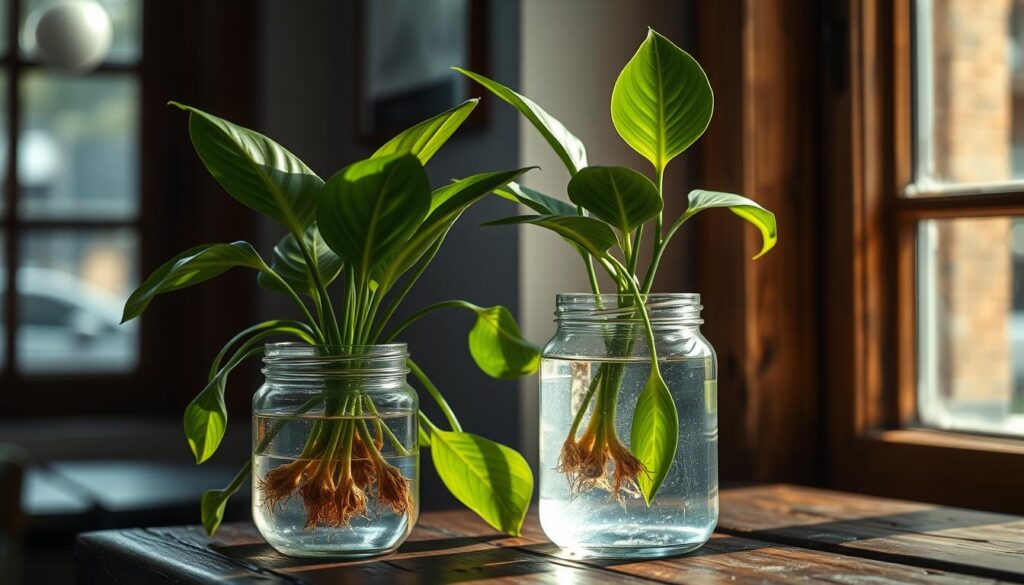
Seasonal Care for Philodendrons
As you care for your Philodendron, remember the seasons change. This affects your plant’s needs. Follow the right care tips to keep your plant happy all year.
In winter, your Philodendron needs less water and food. Water it once every 4-6 weeks. Don’t give it food during this time.
But in summer, your Philodendron grows fast. It needs more water and food. Water it when the top soil feels dry. Feed it with balanced fertilizer once a month. These tips help your plant grow well.
Adjusting for Winter and Summer
Here are some tips for changing seasons:
- Water less in winter to avoid root rot
- Water more in summer for growth
- Fertilize monthly in growing seasons (spring-fall)
- Don’t fertilize in winter
These tips help your Philodendron thrive in any season. Watch how your plant reacts to the seasons. Adjust your care as needed.
Seasonal Growth Patterns
Knowing your Philodendron’s growth patterns is key. In spring and summer, it grows fast. You might need to trim it often to keep it looking good.
In fall and winter, it grows slower. Your plant needs less care then. By understanding these patterns, you can care for your Philodendron better. This keeps it healthy and happy all year.
Benefits of Keeping Philodendrons at Home
Keeping Philodendrons at home is good for many reasons. They help clean the air and make your home look nice. Costa Farms says Philodendrons remove bad stuff from the air. This is great because we spend a lot of time inside.
By taking good care of your Philodendron, you get lots of benefits. Here are some:
- They make the air cleaner by removing bad stuff
- They make your home look pretty
- They can help you feel less stressed and more calm
To make your Philodendron happy, follow some easy tips. Give it indirect sunlight, water it right, and mist it often. With the right care, your Philodendron will be a beautiful part of your home.
Adding a Philodendron to your home can bring many benefits. You’ll get cleaner air and a prettier home. Plus, you might feel happier and less stressed. So, why not try it and see the difference for yourself?
Philodendron Care for Beginners
If you’re new to Philodendrons, don’t worry. These plants are great for beginners. They are easy to care for and look beautiful indoors. Start with a ‘Brasil’ Philodendron for bright, indirect light and flexible watering.
Top Tips for New Plant Parents
For your Philodendron to thrive, give it the right light and water. Keep the soil moist but not too wet. Feed it monthly when it’s growing and trim it often to keep it neat. Follow these steps, and your Philodendron will grow well and add beauty to your home.
Resources for Further Learning
Want to learn more about Philodendrons? There are many online resources. The Spruce and Gardening Know How have great guides and tips. Also, talking to local plant lovers or joining online groups can help a lot as you start your Philodendron adventure.


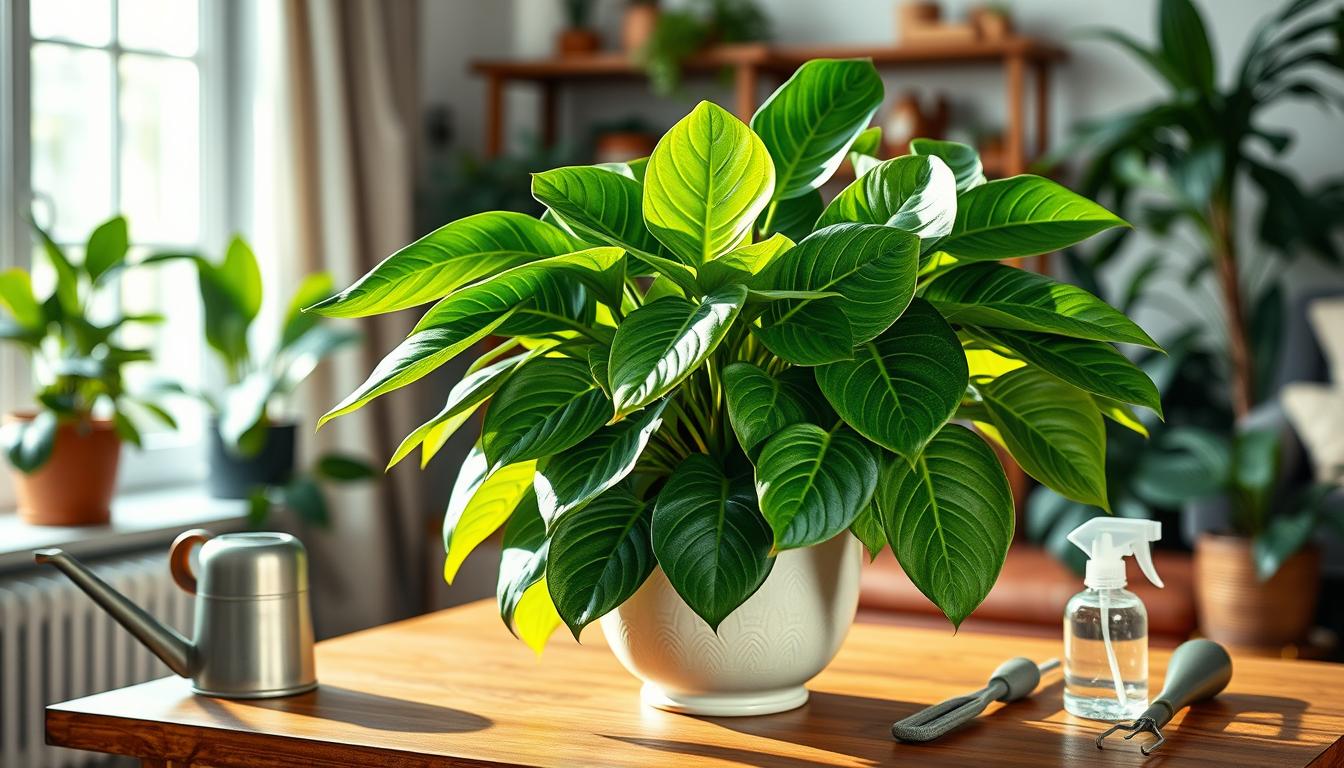
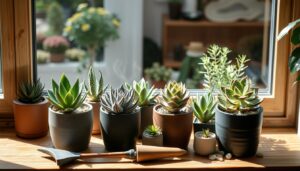

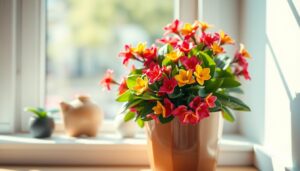
Pingback: 12 Best Houseplants for Beginners to Brighten Your Home - Trusted House Plant Guide
Pingback: The Ultimate Beginner's Guide to the Most Wanted Indoor Plant for 2025 - Trusted House Plant Guide